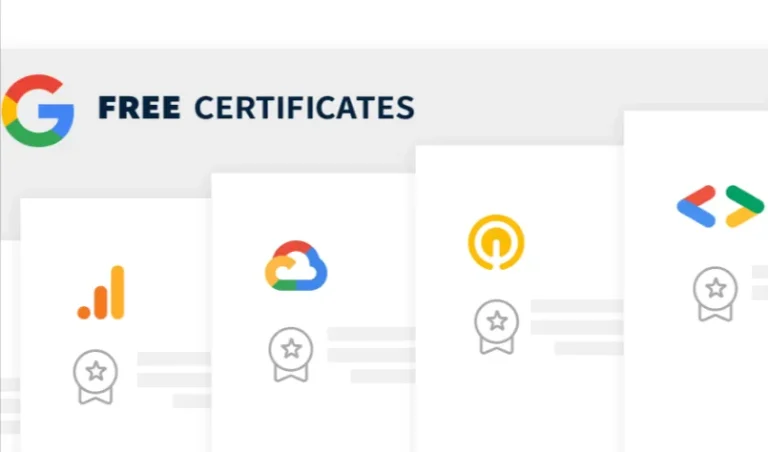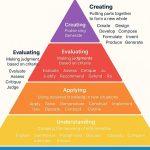
Ai in eLearning: AI Tools for creating interactive eLearning
AI in eLearning: Transforming Education with Personalized, Interactive, and Efficient Learning Experiences
Imagine where learning is not confined to the walls of a classroom or the pages of a textbook. A world where education is accessible to anyone, anywhere, at any time. Thanks to the rise of Artificial Intelligence (AI), this vision is becoming a reality. AI is revolutionizing eLearning, making it more personalized, interactive, and efficient than ever before. Whether you’re a student, a corporate professional, or a lifelong learner, AI-powered eLearning tools are transforming how we acquire knowledge and skills.
In this blog post, we’ll explore how AI is reshaping eLearning, the benefits it brings, and the tools you can use to create engaging and effective online courses. We’ll also share best practices for integrating AI into your eLearning strategy, ensuring that you make the most of this transformative technology.
The Rise of eLearning and the Role of AI
eLearning, or electronic learning, has come a long way since it was first introduced in 1999. It has become a cornerstone of modern education and corporate training, offering flexibility, accessibility, and cost-effectiveness. From online courses and webinars to virtual classrooms and mobile learning apps, eLearning has made it possible for people to learn at their own pace, on their own schedule.
But as the demand for eLearning has grown, so too have the challenges. How do you create engaging content that keeps learners motivated? How do you cater to the diverse needs of a global audience? How do you ensure that learners are actually retaining and applying what they’ve learned?
This is where AI comes in. By leveraging AI, educators and trainers can create eLearning experiences that are not only more engaging but also more effective. AI can analyze learner data, adapt content to individual needs, and provide real-time feedback, making learning more personalized and interactive.
Benefits of AI in eLearning
AI is transforming eLearning in ways that make it more accessible, engaging, and efficient. Here are some of the key benefits:
- Personalized Learning Experiences
AI algorithms can analyze individual learner data—such as performance, preferences, and pace to deliver customized content and assessments. This ensures that each learner receives the right level of challenge and support, optimizing their learning outcomes. - Increased Engagement and Interactivity
AI-powered eLearning modules can incorporate interactive elements like simulations, Virtual Reality (VR), and gamification. These technologies make learning more immersive and engaging, helping learners retain information better. - Efficient Content Creation
AI-driven authoring tools and smart assistants can streamline the content creation process, allowing educators to develop high-quality eLearning modules quickly and without extensive technical expertise. This frees up time for instructors to focus on teaching and learner support. - Accessibility for All
AI translation services and chatbots can make eLearning content accessible to a global audience. Real-time translation and 24/7 learner support ensure that language barriers and time zones are no longer obstacles to learning. - Data-Driven Insights
AI-powered analytics tools provide valuable insights into learner behavior, progress, and engagement. These insights enable educators to make data-driven decisions and continuously improve their courses.
How AI Can Be Used in eLearning Content Creation
AI is opening up new possibilities for educators and learners alike. Here are some of the ways AI is being used in eLearning content creation:
- Personalized Learning Paths
AI can analyze learner data to create customized learning paths. For example, if a learner is struggling with a particular topic, the system can provide additional resources or practice exercises to help them master it. - Interactive Content
AI can generate interactive scenarios, quizzes, and simulations that make learning more engaging. For instance, a medical student could use an AI-powered simulation to practice diagnosing patients in a virtual environment. - Automated Content Generation
AI can assist in creating course content by generating text, images, and even videos. This not only speeds up the content creation process but also ensures that the material is relevant and up-to-date. - Real-Time Feedback
AI can provide instant feedback on assignments and assessments, helping learners understand their mistakes and improve their performance. This immediate feedback loop enhances the learning experience. - Chatbots for Learner Support
AI-powered chatbots can answer learner questions, provide guidance, and even connect students with instructors or peers. This ensures that learners have the support they need, whenever they need it.
AI Tools for creating interactive eLearning

To harness the power of AI in eLearning, you need the right tools. Here are some must-have AI-powered tools for creating engaging and effective online courses:
- Learning Management Systems (LMS)
AI-enhanced LMS platforms personalize the learning journey by providing intelligent recommendations and automating administrative tasks like grading and progress tracking. For example, some LMS platforms can identify at-risk students and recommend additional resources to help them succeed. - Authoring Tools
AI-driven authoring tools simplify the creation of interactive eLearning modules. These tools can suggest relevant images, generate interactive scenarios, and provide feedback on course content and structure. - AI Translation Services
AI translation tools make eLearning content accessible to a global audience by providing accurate, real-time translations. This eliminates the need for manual text conversion and ensures that your courses can reach learners in multiple languages. - Chatbots
AI-powered chatbots offer 24/7 learner support, answering questions and providing guidance. They can also connect learners with instructors or peers, ensuring that everyone gets the help they need. - Analytics Tools
AI-powered analytics platforms provide insights into learner behavior, progress, and engagement. These tools use Machine Learning algorithms to identify patterns, predict outcomes, and recommend customized learning paths.
Best Practices for Using AI in eLearning
To get the most out of AI in eLearning, it’s important to use it strategically. Here are some best practices to keep in mind:
- Define Learning Objectives
Clearly articulate the desired learning outcomes for your eLearning modules. This will guide the selection and integration of appropriate AI tools. - Choose the Right Tools
Evaluate and select AI-enabled tools that align with your learning objectives and learner needs. Ensure that these tools integrate seamlessly with your existing eLearning ecosystem. - Develop a Course Creation Checklist
Create a checklist that outlines the key steps and considerations for leveraging AI in eLearning development. This will help you stay organized and ensure a systematic approach. - Integrate with Existing Platforms
Use your existing eLearning platforms, such as your LMS, to create a cohesive and streamlined learning experience. Integrate complementary AI tools to enhance functionality. - Continuously Evaluate and Improve
Monitor the performance and impact of your AI-enabled eLearning modules. Use learner feedback and data-driven insights to make continuous improvements.
A quick example
Let’s say you’re creating an eLearning course on digital marketing. Here’s how AI can enhance the experience:
- Personalization: AI analyzes each learner’s background and tailors the course content. A beginner might start with the basics of SEO, while an experienced marketer might dive straight into advanced analytics.
- Interactivity: AI generates interactive quizzes and simulations, such as a virtual campaign-building exercise where learners can test their skills in a risk-free environment.
- Real-Time Feedback: As learners complete assignments, AI provides instant feedback, highlighting areas for improvement and suggesting additional resources.
- Chatbot Support: A chatbot answers learner questions, such as “What’s the difference between CPC and CPM?” and provides links to relevant modules.
- Analytics: AI tracks learner progress and engagement, identifying which topics are most challenging and recommending adjustments to the course content.
The Future of AI in eLearning
AI is not just a buzzword—it’s a game-changer for eLearning. By making learning more personalized, interactive, and efficient, AI is transforming how we teach and learn. Whether you’re an educator, a corporate trainer, or a learner, the possibilities are endless.
As AI continues to evolve, it’s up to us to harness its potential in ways that make learning more accessible, engaging, and impactful. So, why wait? Start exploring AI-powered eLearning tools today and take the first step toward creating a brighter future for education.
However, have you used AI in your eLearning projects or nay of your projects? What tools or strategies have worked best for you? Share your experiences or how Ai helped you in the comments below, we’d love to hear from you. And if you’re ready to dive into AI-driven eLearning development, check out our recommended tools and resources to get started. Together, let’s shape the future of learning.








